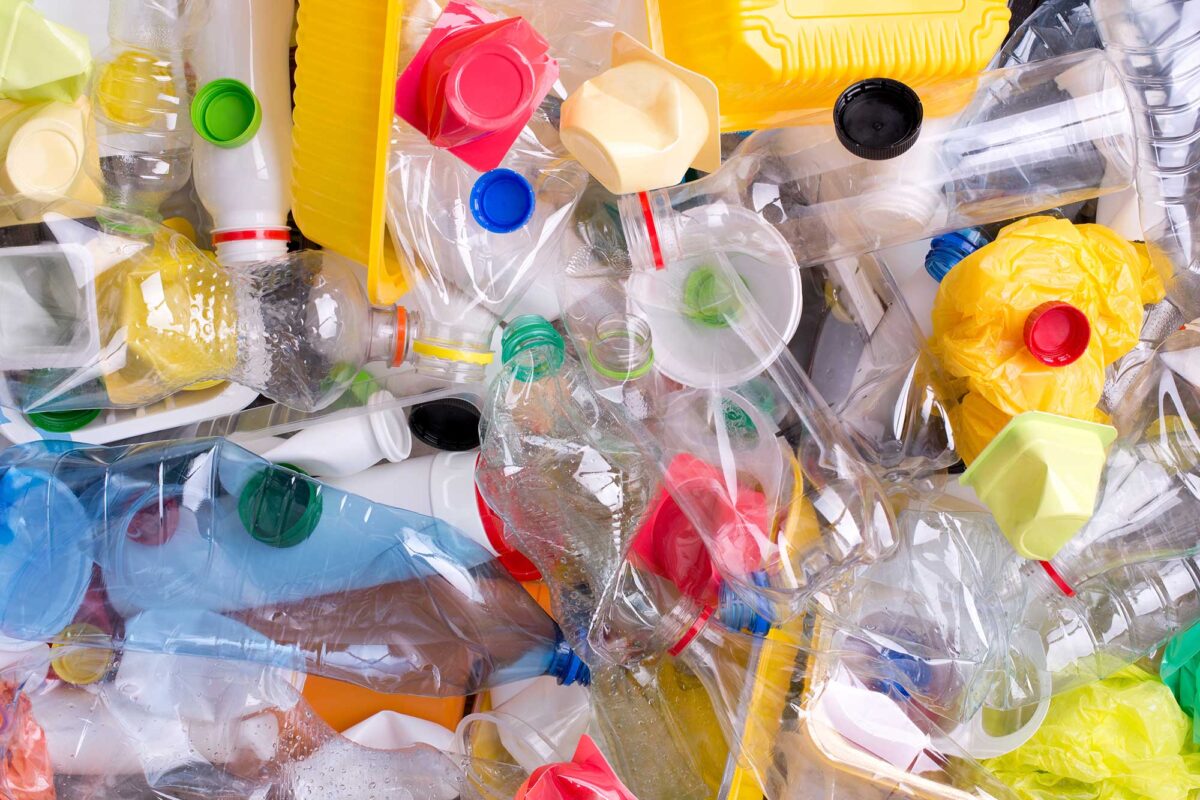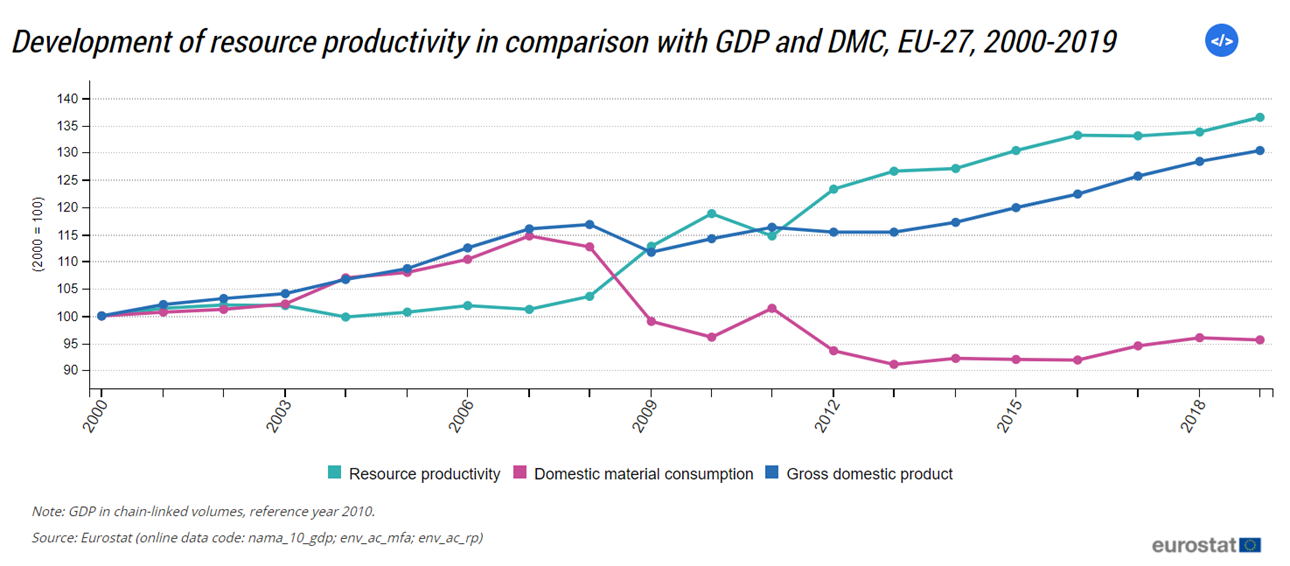The concept of the circular economy appeared already in the 1970s, but only in recent decades shrinking natural resources and climate change have forced us to take real action aiming at implementing the principles of the circular economy.
It has become a necessity to learn how to proceed with economic development without devastating our planet at the same time.

Waste means resources
Modern technologies help to use raw materials more efficiently, what is reflected in the resource productivity index for European Union countries for the last 19 years.
Resource productivity is the amount of resources used to produce goods or services; it increases if the same amount of used materials results in obtaining a “more valuable” product:

Despite these positive changes, only 12% of materials used in EU industry come from recycling. According to Eurostat data from 2016, in EU countries an average amount of waste sent to landfills is 26%. Poland is ranked slightly above the EU average with 29%. In the Scandinavian countries, on the other hand, significantly less waste is disposed of in landfills: in Denmark it is only 3%, in Sweden 8% and in Finland 12%.
An important step towards the circular economy is the recovery and preservation of high quality materials. This requires well-organised logistics – the waste must first be collected, processed and returned to the market while maintaining the value of materials. Collection systems must be user-friendly and ensure proper sorting and storage of materials. An efficient system requires adequate infrastructure and supply planning, but the benefit for the environment and the economy is obvious.
The example of the Dansk Retursystem shows that a well-organised network of pick-up points, well-planned logistics and cooperation with producers bring great results. How does it work?
A consumer who has bought a drink in a can, reusable or disposable bottle can easily return it to special vending machines placed in shops or petrol stations. And even in the case of vending machine absence in the shop, the seller is obliged to collect the packaging if the assortment includes other products in such packaging.
The Dansk Retursystem also has a network of pick-up stations for collecting bottles and cans. Consequently, you can return packages in bulk, all sizes and types of bottles are thrown into one opening, without the necessity of sorting them beforehand. The machine will recognize how many packages of a given type have been returned and the corresponding deposit amount will be included on the receipt. It is child’s play; therefore, this impressive result has been achieved: out of ten sold bottles and cans, as many as nine go to collection points and to the closed material loops.
Such success requires systemic solutions, adequate infrastructure, but also the involvement of stakeholders at every stage of the product cycle. For instance, a joint project between Swedish companies Stena Recycling and Electrolux “Made to be re-made” draws attention to the fact that waste recovery has to be considered already at the stage of product design. However, the solution to the challenges we face goes far beyond more efficient use of resources. In the future we will process, reuse, repair and share primary materials. We are facing an opportunity to create a new kind of sustainable economic growth.